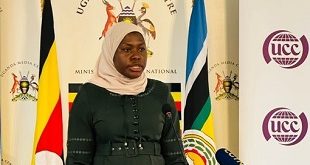
Gulu, Uganda | THE INDEPENDENT | Papyrus mat makers in Gulu City are worried that they may soon lose their source of livelihood iF the drastic encroachment on wetlands is not checked.
The fear follows the continued encroachment on wetlands by farmers who have opened up several gardens in the swamps, clearing large portions of the papyrus reeds, replacing them with plots of vegetables and sugarcane.
Christine Lawino, a papyrus mat maker explains that 20-years-ago, she could just take a 20-minute walk to a wetland in Layibi, and within minutes, cut reeds enough for a mat from the edge of the swamp. Lawino has been making mats out of papyrus since she was a teenager. As a child, she saw her parents making mats to buy all they needed. It is from them that Lawino learned the skill.
Lawino’s family was not the only one that earned a living through this trade. In fact, the village where she grew, and lives to date, is named kolo quarters (kolo is an Acholi word for papyrus mats), because almost 90 per cent of its inhabitants earned their livelihood by making papyrus mats. Then, every home in Kolo quarters would have heaps of the reeds packed all around each hut. The number of papyrus bundles in a home signified the owners’ hard work and sometimes, financial worth.
However, this has changed over the years, as the population in the city continues to increase, putting pressure on available land, both for farming and settlement. The wetlands have not been spared in this development.
“I now walk at least an hour, before I can get good and mature reeds, islanded right in the heart of the swamps, to make strong mats for sale,” Lawino said. She added that papyrus mat making is a very lucrative business for her because it enabled her to pay her two children to school up to secondary level, and also buy a plot of land.
Sam Anywar, another mat maker, says he made mats for five years, and its earnings enabled him to pay school fees and other essentials for his family. Anywar says he left the business and went to his village, but when he returned last year, it was the only business he could think of. However, Anywar says unlike before when he could get the reeds from Layibi swamp, which is near his residence, he now walks up to Pece swamp, thrice the distance he used to cover, to get good reeds.
Translation “I mostly get my reeds from Pece, but they have also created farms on the edges, so I have to go deep to get the reeds. It is the only business I am relying on for all my basic needs. It has helped many people here to pay for education and all other things.”
People buy papyrus mats for various uses such as creating sheds, business stalls, and even sitting or sleeping. Statistics from the municipal environment department shows that 60 per cent of wetlands were already encroached on and destroyed by 2018.
The 1995 Constitution of the Republic of Uganda, stipulates that private ownership of wetlands is prohibited and anyone operating in a wetland is legally required to have a permit granted by the National Environmental Management Authority, NEMA, after an assessment ascertaining that the proposed activity will not be destructive to the environment.
Tom Oree, the Gulu Deputy Resident District Commissioner says that almost all swamps in the city and surrounding areas have been degraded. Oree says that the swamps do not only help the papyrus mat makers but some supply water to Ooitino swamp, which is a source of water supplied by the National Water and Sewerage Corporation.
He adds that human activities on the swamps such as farming, sand mining and car washing is polluting water, which is not only affecting both humans and aquatic animals.
Oree says within these two weeks, he will sensitize the public on the dangers of destroying the various watersheds before they embark on penalizing those found destroying them.
The 2019 Water and Environment Sector report shows that countrywide wetland coverage dropped from 15.5 per cent in 1994 to 8.9 per cent, and was expected to drop further (8.4 per cent) by end of 2019. Statistics show that by 2016, wetland coverage had reduced by 8.9 per cent to 8.4 per cent by 2019 countrywide, with northern Uganda having 21 per cent of its wetlands destroyed.
According to the same report, Uganda will be left with only 1.6 per cent of wetlands by 2040, if the destruction trend is not reversed by deliberate and dedicated restoration programs.
********
URN
 The Independent Uganda: You get the Truth we Pay the Price
The Independent Uganda: You get the Truth we Pay the Price





